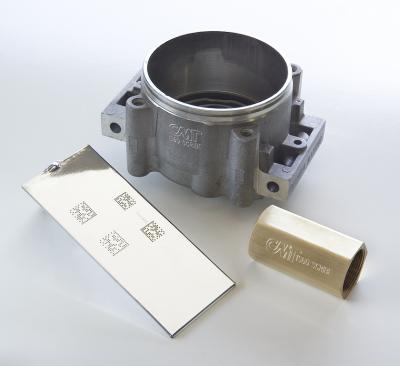
Marking hard materials with a deep mark is vitally important to manufacturers in many industries today. Processes like painting, plating, heat treating and subsequent machining can make shallow marks disappear, and in a manufacturing environment that requires absolute traceability, the right marking process must be applied.
Columbia Marking Tools Inc. has pioneered the application development of many of the marking processes used in manufacturing today, including enhanced versions of dot-peen marking, low-stress dot-peen marking, impact marking, roll marking, laser marking and now scribe marking.
Tom Phipps, Columbia Marking Tools, CEO, says, “Columbia has designed and built hundreds of stand-alone and automated special marking machines utilizing every type of marking process. We study the customer’s process and apply the best marking system solution for the application. That includes, type of mark required, production requirements, noise and safety of the process, and ultimately the quality of the mark. Types of marks include, date stamp and shift codes, QC marks, part numbers, traceability marks, UID Compliant and 2D Matrix Square Dot codes, company logos, lot numbers, and even trademarks.”
Phipps points out, “Today we are seeing an increased need for deeper marks in new types of alloys, steels, including high-strength low-alloy steel (HSLA) and different formulations of casting materials, all of which require versatility in the range of marking pressure capability.
“But how do we define a deep mark. In some cases, it can be as deep as 0.0310-inch. The depth required is what limits the type of marking process. For example, typical laser marking depth is 0.0005-inch for any reasonable production rate. Standard dot-peen marking up to 0.0030-inches, but with an air-operated impact marker you can achieve average marking depths of 0.0080-inch. and roll marking up to 0.0120-inch.”
Columbia developed a new C-Series of markers that perform both dot-peen and what is called the "Silent Scribe" CNC marking system. Columbia originally patented programmable CNC scribe marking machine technology in 2005 primarily for standard I-Mark™ scribe markers for marking 2D Square Dot matrix codes. The marker utilizes an x-y-z axis slide arrangement that is driven through precise ballscrews. The scribe head, mounted on a platen that is linked to the slides, uses a diamond stylus to quietly scribe text or graphics into hard or soft surfaces producing fully-formed lines, curves, and 2D matrix codes.
The control of the head movement is provided by a programmable controller that interfaces with standard Windows-based systems combined with the high-power I-Mark marking system to create the marks and codes. Utilizing high-power stylus actuators that operate on relatively low air pressure, the C Series can produce extra deep marks. The ballscrew and linear bearing axis design permits the user to have either a quiet-running servo motor drive that provides high-speed marking capability up to 10 characters per second with 0.005mm positioning accuracy, or a high-performance stepper motor drive that gives 0.02mm repeatability at 5 characters per second. The machine can operate as a stand-alone or, because of its compact size, can be easily integrated into an automated production system that use robots, because the marking head is designed to get out of the way. With the C-Series component architecture, the individual axis can be customized from 40 mm to 500 mm travel or more, allowing for extreme flexibility.
Contact Details
Related Glossary Terms
- alloys
alloys
Substances having metallic properties and being composed of two or more chemical elements of which at least one is a metal.
- computer numerical control ( CNC)
computer numerical control ( CNC)
Microprocessor-based controller dedicated to a machine tool that permits the creation or modification of parts. Programmed numerical control activates the machine’s servos and spindle drives and controls the various machining operations. See DNC, direct numerical control; NC, numerical control.
